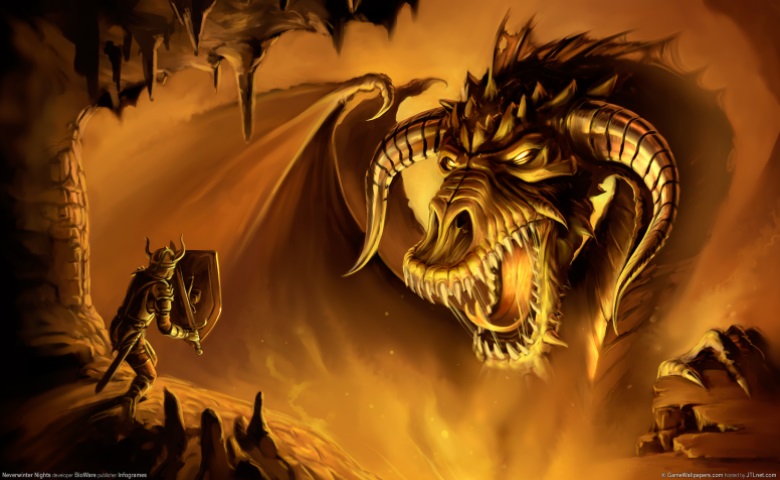

Dungeons and Dragons (D&D) is going through a pretty cool revival thanks to Stranger Things, and at the heart of D&D are the characters people create. But what are the real differences between the races, backgrounds and skills of these characters? We've got our hands on some data, and we're going to find out!
Recently, GitHub user oganm posted character sheet data for a bunch of Dungeons and Dragons 5th Edition characters. Data for 885 unique characters was gathered over 5 months through tools for a mobile character sheet application. While he has already done a fascinating analysis of this data, I wanted to see what I could find out about the adventurers who fill the imaginary worlds of D&D groups.
Dungeons and Dragons is a fantasy tabletop role-playing game in which players undertake quests overseen by a Dungeon Master (a player who creates and narrates the story of the game). Players create their own characters. These characters can have different races, backgrounds, classes, and skills. The attributes that players choose for their characters affect their capabilities throughout the course of the game.
So, what does the data tell us about these brave adventurers? (By the way, you can see all the magic behind the visualizations in this post, as well as lots of other analyses, by clicking the button below.)
Explore the original dashboard
Who becomes an adventurer?
In D&D, a character's race is basically the species they belong to. Many of these are inspired by high fantasy fiction like The Lord of the Rings, while others are more obscure.
You can create your own donut chart for free here!
Unsurprisingly, most adventurers are human. What's more, more than 40% of characters fall into the "standard" fantasy races of Humans, Elves, and Dwarves. It looks like people love their Tolkien.
A character's background describes the character's life before they became an adventurer.
When we look at the background of characters, things are much more diverse. No one background really stands out as the most popular.
Now, what do these adventurers do? Let's answer this by looking at the classes they're part of and skills they're proficient in.
Classes and Skills
A class describes what a character in D&D does. For instance, a character who is a wizard uses arcane knowledge to cast spells, whereas a ranger allows a player to live out their Aragorn fantasies.
Characters can be part of multiple classes, so we count any character with at least 1 level in a class as being part of that class.
It's also interesting to look at the skills that the different classes tend to use. While some skills are decided by a character's class, players still have plenty of choice in the skills they pick.
Most classes make good use of perception and insight, although Paladins and Sorcerers are notably worse at perception. Wizards are the least athletic class (unsurprisingly), but are also the least intimidating class. I guess vast arcane powers just don't scare people like you'd expect. Rangers and Druids seem to be the only classes who are any good with animals or nature.
Alignment
One other thing we might be interested in is the moral alignment of these characters. While most of the users in our sample (71%) decided not to include this in their character sheet, we still have a decent sample to look at.
Thankfully, most adventurers are good people. However, they tend pretty heavily towards Chaotic (as anyone who's run a game of D&D can certainly attest to). Let's take a closer look at the differences between adventurers who have different alignments.
Right away, it's clear that the more morally unscrupulous adventurers are also by far the most charming. Evil characters also tend to be slightly smarter and more dexterous than their good-aligned counterparts, whereas good characters seem to tend towards "strong but stupid". There's less to be said about the differences between Lawful and Chaotic adventurers.
So, how do differently-aligned characters differ in terms of the classes they choose?
Instead of showing the average alignment for each class (the average adventurer for each class still sits around chaotic good), we're looking at the amount each class differs from the average alignment. Mostly, there's nothing surprising here - paladins are more lawful, and barbarians and sorcerers are more chaotic. Warlocks and wizards are drawn more towards evil, whereas druids prefer to be good.
Doing the same type of analysis with skills is also interesting.
Those who lie or steal are more likely to be chaotic or evil, whereas those skilled in medicine tend towards lawfulness and goodness. Adventurers who are proficient in religion tend to be good, which is interesting - it seems there aren't many devout followers of evil gods around. What's more, it seems that there's a relationship between the "goodness" of skills and their "lawfulness".
Full character comparison
We can take all this information and use it to compare each of our characters with every other character! Each point in the chart below represents a character, colored according to class. Points are clustered based on ability scores, skills, background and race. Based on this chart, we can see which types of characters are most similar to which other types of characters. Hover over points for more info!
So, are you thinking of changing up your character the next time you hit the D&D tabletop? Make sure you tell us!
Keen to learn more? Click here to see tons of other visualizations that we didn't have space to include in this post!
Explore the original dashboard
(Featured Image © 2006 Sawan Kumar Pandey. License: CC BY-SA 4.0)



